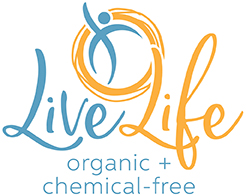It was easy to find a fully solid wood door made of oak (hardwood) a few short years ago. But yesterday, when I searched the internet for companies selling solid wood hardwood interior doors, I found a lot of marketing jargon that was mis-leading.
I wanted to give up. Stop looking. Ugh, frustration!
But, I wouldn’t feel good about it. I wouldn’t feel in alignment with myself and my intention (to create a healthy home).
So, I put on my YouTube music playlist and dug in further. Went deeper into the internet to find a company, and vowed to myself to call local companies as well (not just look at products sold on the internet).
During my search, here’s what I found and what might be helpful in your own search for non-toxic interior wood doors.
Parts to Interior Wood Doors
The picture below that This Old House put together show that there are several parts to interior doors. The two we’re going to focus on are the labels (in all caps in the picture): Door Jamb and Interior Door.
Since both the door jamb and interior door affect our indoor air quality and healthiness of our home, we want to consider both.
When I was looking for non-toxic solid wood interior doors, there were companies that carried them, but then the door frame was made of engineered wood. It seems weird! But it’s true.
Our goal here is to have both the interior door and the door jamb be 100% solid wood, hardwood (if possible), and unfinished. We’ll finish the doors with a non-toxic finish or have a company do that for us using non-toxic finishes.
Door Jamb
Door jamb is also called a door frame. Often times the door frame is made of pine or a soft wood and covered with a veneer of wood that matches the door. So, if the door is made of mahogany, the door jamb would be made of pine with a veneer made of mahogany.
You’ll want to read (or ask for) the details from the manufacturer in order to find out what materials are used to make the interior wood door and door frame. It can feel tedious and like a pain in the heinie, but it’s a worthwhile effort with lots of health (physical, mental, spiritual) benefits that have a ripple effect on all of life.
What to Look For
100% solid hardwood door frame
Marketing Awareness
- Sometimes when the door is solid wood, the frame can still be engineered wood. Example: Below is a screen shot from a popular door company. The description is for their “2 Panel Arch Solid Wood Entry Door.”
Non-toxic Interior Wood Doors
Types of Interior Wood Doors
- Solid Core vs. Hollow Core
- Paneled
- Slab
- Bi-fold
This Old House does an awesome job of explaining what each of these are. I encourage you to read their article, “All About Doors.”
What to Look For
Look for “solid wood” doors. This means allllll (or 100%) solid wood.
Marketing Awareness
Most of these terms fooled me early on so I’m sharing them with you in hopes they might be helpful to you. Awareness is half (or more) of the
- Solid core does not mean all-solid wood. “Solid core” doors can be made of 100% solid wood OR, most often, composite wood that’s filing the inside. “Hollow core” means that there is wood structure, often pine smaller supports or a cardboard-like composite, in the middle of it.
- “Engineered” means it’s human-made, not solid natural wood (trees).
- “Slab” style doors can also be made of composites (MDF, etc). When I think of slab I think of all-solid wood, but that’s not the case! It just means that the hinge cups (where the hinges sit) are not cut out yet.
- “Wood veneer” means that there is a thin piece of wood glued to the exterior. The middle can be made of MDF, composite wood, plywood or other materials.
Want more tips for finding non-toxic building materials? Subscribe to our monthly newsletter.
